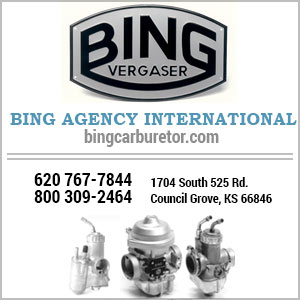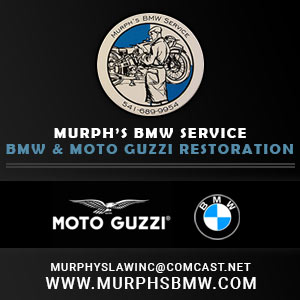Brake grease
I've got a 1979 R100T and I'm gearing up to replace the front brake pads (ATE brake assembly).
First off, I am not (yet) very knowledgeable with grease. I don't know if one kind will ruin another kind if in close proximity or if another will ruin any of the rubber parts or some such in my brakes. I'm really trying not to ruin stuff. I need something that will work, not necessarily be the absolute best here (although that would be ok too :))
As I'm reading through the manual page on the topic, I notice that they recommend Molykote BR 2 or Liqui Moly LM 47 L for greasing the guide pin of the outer brake pad. Neither of those greases appear to be readily available here in the US (and certainly not in Alaska!). So I'm wondering if anybody knows of a good stand in grease for this purpose.
They also mention that I should be greasing a variety of other parts. Can anybody recommend what I should be using? The spring mentioned near the end of the page appears to be covered in black grease on my bike.
In short, there are three things that need to be greased:
1. Guide pin for the outer brake pad,
2. The eccentric pin, and
3. The spring between the pin and the end cap
What type of grease should I use for each of these?
I have a synthetic caliper grease & brake quiet I picked up at O'Reilly Auto Parts. Perhaps that would suffice for a couple of these applications?
I am going to try to sell you on the idea that greased is much better than dry in applications that call for lubrication. At the risk of revealing my ignorance to the few remaining members that are not already aware, I, personally, would be willing to take a chance on using a non- specified "brake" part grease on brake parts. All usual disclaimers apply; don't over do it, try to keep it out of friction surfaces like the actual pads, and most importantly proceed at your own risk.
....but seriously,..... Liqui-moly implies a flowable type of lubricant., and molybdeneum (sp?) is a soft metal. I might be tempted to substitute powdered graphite on the outer guide pin(s).
Of course, I might be completely off my rocker.
former Airmarshal, IL.
8053 has a good motto.
The idea there is to keep those parts moving despite being almost submerged in water when you ride in the rain or wash your bike. So the primary requirement is that the grease be water resistant or water proof. The caliper doesn't operate fast enough to need to prevent heat, like say a wheel bearing would.
Now mixing greases is not a great idea either, so I'd pull the caliper pins and wipe off as much of the old grease as possible. (Those pins have a threaded hole to insert a metric screw in to assist removal.) Then coat the pin with boat trailer wheel bearing grease, which you can buy almost anywhere. So the idea is to exclude water and prevent rust so that your brakes operate easily and don't get stuck is a particular position.
When I fitted my last set of ATE pads, one side didn't fit precisely. Be prepared to file off a tiny bit off the steel backing to allow the pad to nest correctly. Don't hammer them into place or they won't be able to come out next time. Then allow several weeks to bed in with the disc. You will not have 100% braking efficiency for several hundred miles and may be tempted to put the old pads back on. DON'T. Give it time.
Owning an old Airhead is easy.
Keeping an old Airhead running great is the true test.
Thanks guys. This is really helpful. And I couldn't agree more on keeping stuff greased!
If I'm understanding correctly, the VersaChem caliper grease (26189) I got should be good for basically everything in the caliper and the back of the pads (aka items 1 and 2). Reading the back of the package, it says it is waterproof.
Greasing the end-cap spring (item 3) sounds like any water resistant grease should do. I've got a tube of Sta-plex red grease (SL3190) on the shelf in my garage, which I think should do as well as the marine stuff you mentioned because it says it has excellent water resistance. Please correct me my thoughts on the red grease are wrong.
My one concern at this point is that neither of these greases appear to have Molybdenum disulfide (MoS2) in them, but it appears the Molykote and LiquiMoly brands do. I just can't seem to figure out what the MoS2 is needed for. Does it keep the grease distributed more evenly in the motorcycle brake than non-MoS2 grease does? I believe motorcycle brakes vibrate a lot more than car brakes do...
Molybdenum disulfide , a soft metal, is used in places that need to have lubrication and are also subject to high pressure at the point of contact. That is why we use it to lube the splines in the drive line of our airheads. Similarly, this is why there are brass bushings in some places where we find rotating shafts. We would be looking at a softer metal that is used as a buffer between two harder metal parts that contact each other when working. In any machinery application, a brass bushing is a wear part with a limited service life. Similarly, we should re-apply Moly at pre-determined intervals as a part of routine service.
I have a tube of Honda Moly 60 on a shelf in my garage. It used to be available at any Honda motorcycle shop. I'm not sure if Honda still sells it or an equivalent. Moly grease is something that a person ought to be able to get at a farm or industrial supply merchant. A person might contact one of the advertisers in Airmail to check for availability.
former Airmarshal, IL.
► "Caliper grease" is typically a clear to milky translucent silicone-based grease used for brake pad installation or in the very close proximity to DOT4 brake fluid. It is also wonderful stuff to use on all rubber parts, such as o-rings and caliper dust boots. The silicone is actually good for the rubber, since it does not contain petroleum. And yes, being pure silicone it is waterproof. Maybe I'm wrong, but in my thinking it's actually more of a pasty silicone ointment than a "lubricating grease". You would NOT use that stuff on your wheel bearings !
► On the other hand, the black molybdenum grease is petroleum-based lubricant and rated for high loads such as wheel bearings and swing arm bearings, both of which also experience a great deal of water. So this grease is also waterproof. This is the type "grease" that's going to be much closer to the type found on the caliper pivot pin. And that's what you want to use in that application.
What I'm saying here is don't allow the fact that both "greases" are waterproof lead you to believe that they are interchangeable. They are not. The silicone is more of a rubber lubricant, water displacement, and rust inhibitor, whereas the molybdenum grease is a true high pressure, long life, metal-to-metal lubricant. So we all have to be more careful when using the term grease to stand for any paste in a tube or can.
Owning an old Airhead is easy.
Keeping an old Airhead running great is the true test.
We've got some great analogies going here! Thanks for all the enlightening answers. But it seems that answers beget more questions!
In short: I need a petroleum-based grease for the pivot pin (item 2 in the original post) and the spring (item 3 in the original post). And the synthetic caliper grease is good for the back of the brake pad (item 1 in the original post).
So now the question is: would it suffice to use my red lithium grease or does the application require a grease with the moly additive? The red grease has a wide temperature range, is classified for extreme pressure, and has excellent water resistance.
If I need moly grease, is it ok to get something that is ~3% moly (example) which SEEMS to be the standard for moly grease (although I'm not sure of that by any means). Or a much higher percentage like 60% or 70%? Once you get that high, it seems to be called moly-paste, but I can't seem to find a standard rule of thumb on that. I haven't been able to pin down the percentage in the Molykote or LiquiMoly formulas, but my guess at this point would be in the 3% range.
An aside, it appears that Honda has retired the M60 for a newer M77 formula, which appears to be a different beast than the M60.
True enough on the paste designation. As an elderly motorcycle and tractor mechanic, the contents of my tube of Honda Moly 60 paste looks like grease to me. This is where some of us hit a fork in the road on terminology. I'm sure there is a technical difference between paste and grease, but it's all grease to me. No one will ever be able to righteously accuse me of overthinking these things. If you have an application that calls for moly, 3% has to be better than 0%.
I completely agree with Wobbly's assessment and recommendation of high density, water repelling grease where water infusion might be an issue.
Thanks for the revelation on the Moly 60. I will probably get a tube of the new stuff while I still have the old stuff to make a comparison. Moly 60 has worked well for me on drive splines in my airheads, and I will continue to use what ever version I can obtain. Again, I want to stress this, Molybdeneum is a soft metal, It has lubricative properties when applied to structures (splines or other contact surfaces) made of harder metals and embeds in mating surfaces to cushion these surfaces.
Clear as mud, right?, you'll be fine, put some grease on the parts needing it and ride on.
former Airmarshal, IL.
So now the question is: would it suffice to use my red lithium grease or does the application require a grease with the moly additive? The red grease has a wide temperature range, is classified for extreme pressure, and has excellent water resistance.
I didn't reply directly because I have no experience with "red lithium" grease. I do have a lot of experience with white lithium greases and those would work just fine. What the exact differences would be I can't say.
IMHO, moly is not needed on the caliper pin or spring. The moly grease may have been already specified for other lubrication points on the bike, AND it was water resistant, so they simply used it rather than make the dealerships buy and stock yet another grease.
But as I said, mixing greases is a no-no. You really need to make sure 99% of the old grease is removed before adding the new red lithium.
Owning an old Airhead is easy.
Keeping an old Airhead running great is the true test.
- 27 Forums
- 1,900 Topics
- 10.8 K Posts
- 2 Online
- 5,936 Members





